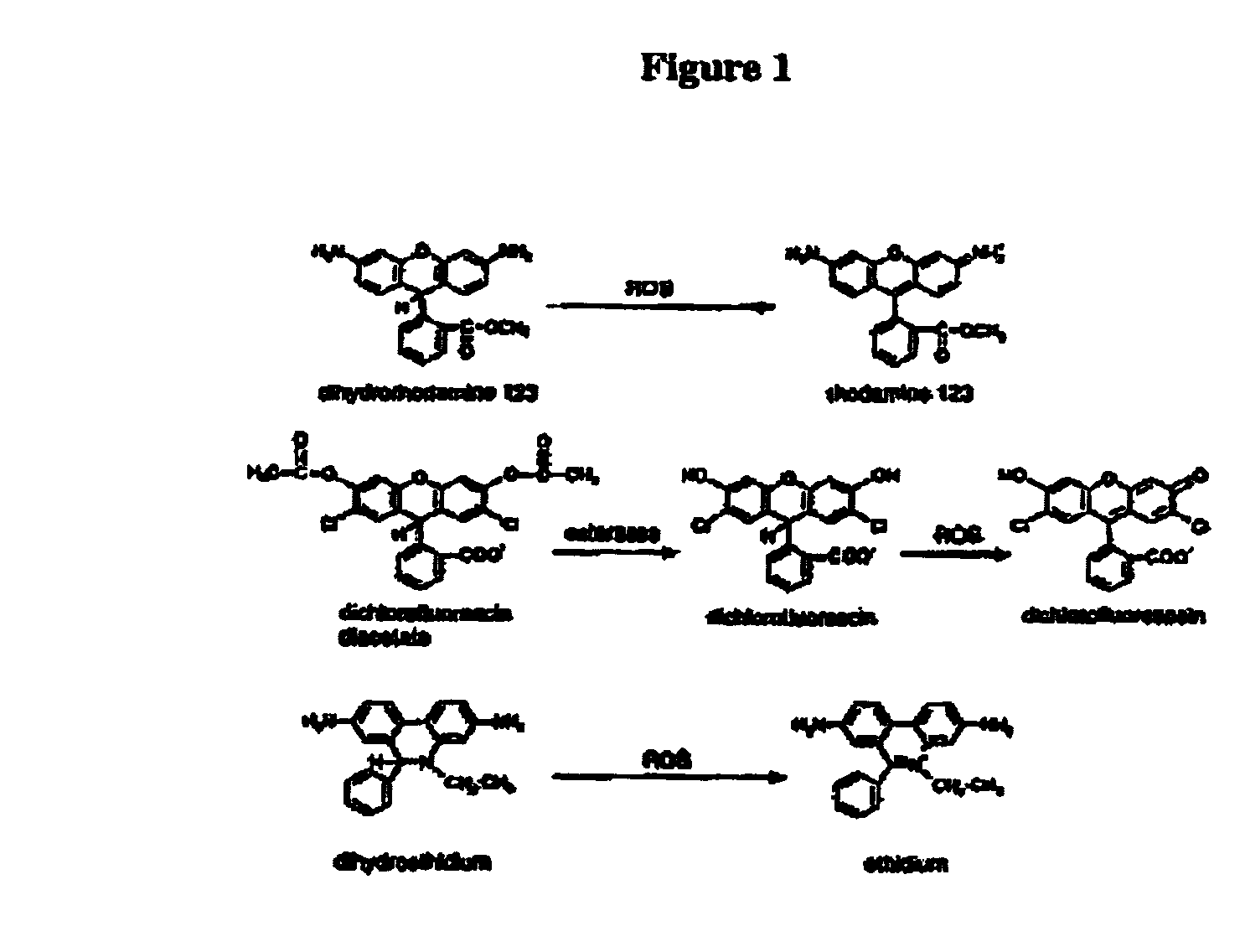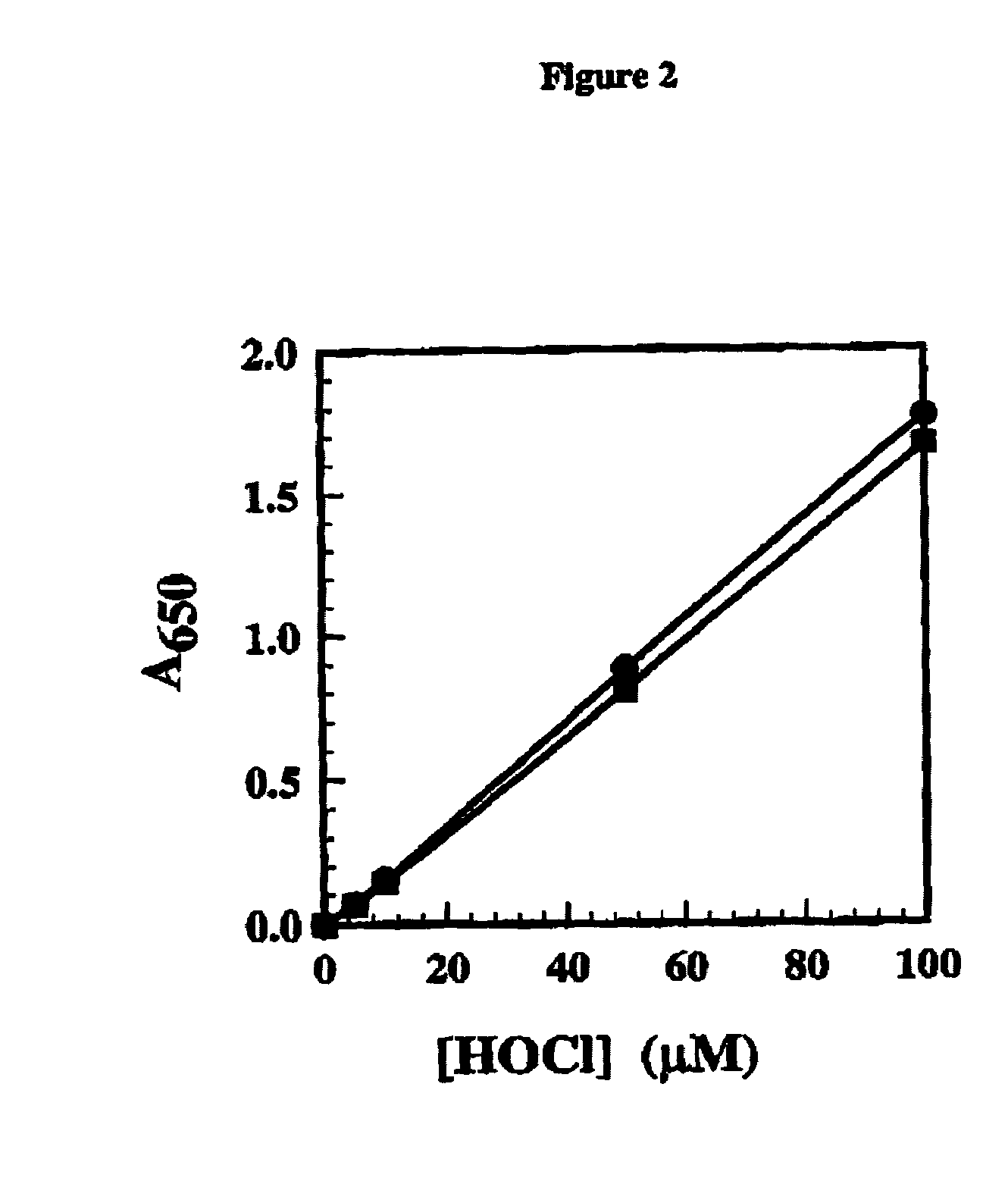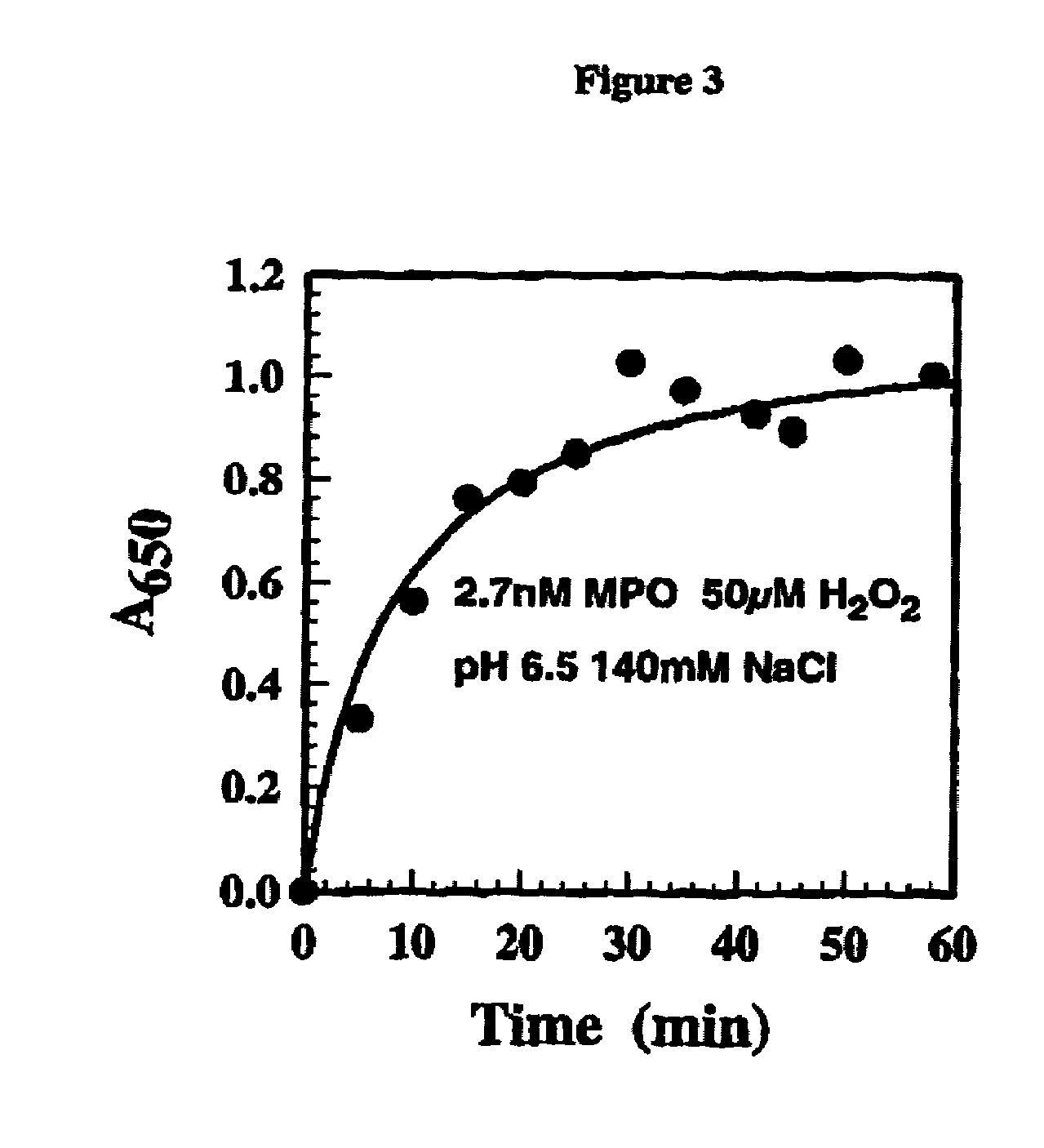Assay for detecting inhibitors of the enzyme myeloperoxidase
a technology of enzyme myeloperoxidase and inhibitor, which is applied in the field of assays for detecting inhibitors of enzyme myeloperoxidase, can solve the problems of negating the use of phagocytic system for screening potential inhibitors, interfere with assay, and deficiency of phagocytic system
- Summary
- Abstract
- Description
- Claims
- Application Information
AI Technical Summary
Problems solved by technology
Method used
Image
Examples
example 1
[0065]Here we describe an in vitro MPO assay that was developed to assess inhibition of enzyme activity. Essentially the MPO assay was designed to measure the production of hypochlorous acid (HOCl), which is the key physiological product generated by the enzyme in vivo. An outline of the assay reactions is given:
[0066]
[0067]The reaction mixtures in 20 mM phosphate buffer pH 6.5 contained 2.5 nM MPO (purified human enzyme from Planta), 100 μM H2O2, 140 mM NaCl, 10 mM taurine, 20 μM tyrosine and compound solvent, DMSO, at 1%. Compounds were preincubated with the MPO enzyme in buffer for about 15 minutes prior to start of the reaction with H2O2. The whole reaction was carried out at room temperature for 10 minutes in a 96-well plate. The reaction was terminated by a stop / developing reagent, which consisted, in their final concentrations, of glacial acetic acid (400 mM), KI (100 μM) and TMB in dimethylformamide (10 mM). All test concentrations were done in duplicate with at least two se...
example 2
[0072]Here we describe the use of a functional human neutrophil assay to determine the effects of MPO inhibitors on the production of HOCl. This assay detects the production of HOCl from stimulated (e.g. PMA, LPS, fMLP, zymozan) human neutrophils. Human neutrophils were purified from fresh heparinised blood by density centrifugation on Polymorphprep (Nycomed). These neutrophils were used immediately after purification. A standard a reaction mixture contained the following: 2×106 neutrophils, 140 mM NaCl, 5 mM taurine, 0.5 mM MgCl2, 1 mM CaCl2 and 1 mg / ml glucose. Test compounds were made up in DMSO and added to cells, with a final DMSO concentration of 0.5%. Test compounds were given 15 minutes preincubation at 37° C. with neutrophils prior to the addition of the PMA stimulant (1 μg / ml). The assay was then allowed to progress for another 30 minutes at 37° C. At the end of the incubation, supernatants were collected by centrifugation and assayed for HOCl by using the stop / development...
example 3
[0076]In this example, the assay is performed by reacting myeloperoxidase (5 to 20 nM) with hydrogen peroxide (100 μM) to generate hypochlorous acid in the presence of a potential myeloperoxidase inhibitor and reacting any formed hypochlorous acid with taurine to form taurine chloramine in 20 mM pH 6.5 phosphate buffer containing 100 mM sodium chloride and 10 mM taurine. Catalase is then added to a concentration of 20 μg / mL to destroy any residual hydrogen peroxide. An approximately equal volume of a developing reagent of 200 nM sodium acetate buffer pH 5.4 containing 2 mM TMB, 200 μM potassium iodide and 10 to 20% dimethylformamide is then added. The amount of oxidised 3,3′,5,5′-tetramethylbenzidine formed is then measured after about 5 minutes using absorbance spectroscopy at about 645 nM.
PUM
| Property | Measurement | Unit |
|---|---|---|
| Volume | aaaaa | aaaaa |
| Volume | aaaaa | aaaaa |
| Volume | aaaaa | aaaaa |
Abstract
Description
Claims
Application Information
 Login to View More
Login to View More - R&D
- Intellectual Property
- Life Sciences
- Materials
- Tech Scout
- Unparalleled Data Quality
- Higher Quality Content
- 60% Fewer Hallucinations
Browse by: Latest US Patents, China's latest patents, Technical Efficacy Thesaurus, Application Domain, Technology Topic, Popular Technical Reports.
© 2025 PatSnap. All rights reserved.Legal|Privacy policy|Modern Slavery Act Transparency Statement|Sitemap|About US| Contact US: help@patsnap.com



